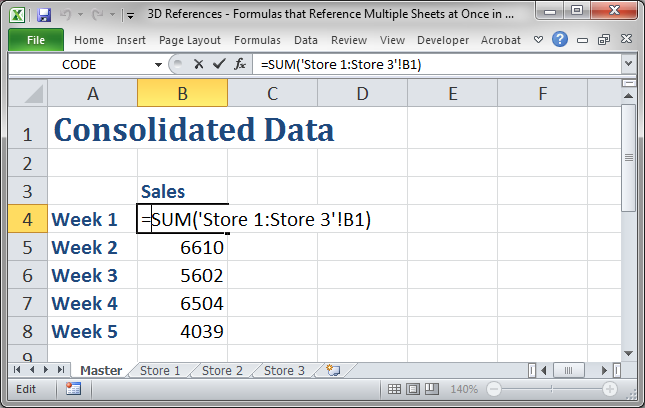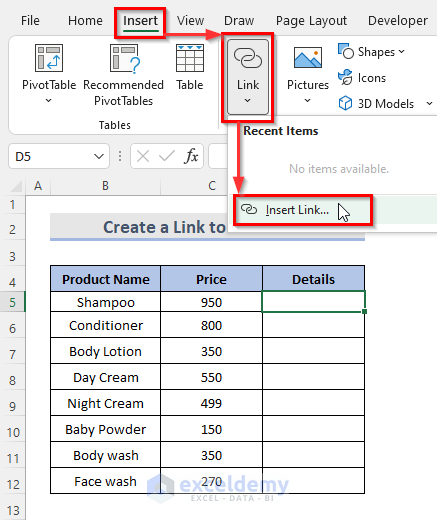Link Excel Sheets: A Beginner's Guide

Linking Excel sheets can transform your workflow, making data management and analysis more efficient. Whether you're a small business owner, a project manager, or just someone who loves organizing data, learning how to link Excel sheets is a skill worth mastering. In this comprehensive guide, we'll walk through the steps to connect multiple Excel sheets, discuss why it's useful, and provide tips for troubleshooting common issues.
Why Link Excel Sheets?

Linking Excel sheets has several benefits:
- Data Consistency: Ensure changes made in one sheet are automatically reflected across all linked sheets.
- Time-Saving: Avoid repetitive data entry by pulling information from a central source.
- Scalability: As your data grows, linking sheets helps manage larger sets of information with ease.
- Error Reduction: Centralized data reduces the chances of mistakes occurring due to manual entry.
Setting Up Your Excel Sheets for Linking

Before we dive into linking, here are some setup steps to ensure a smooth process:
- Organize: Plan your data structure. Know what data will go where and how it will be used.
- Consistent Naming: Use meaningful and consistent names for sheets and ranges to avoid confusion.
- Standardization: Ensure that data formats, such as date or currency, are standardized across sheets.
- Backup: Always have a backup of your files before making significant changes.
How to Link Excel Sheets

Linking sheets involves creating a reference that pulls data from one sheet to another. Here’s how you can do it:
Using External Links

- Open Source and Destination Files: Open the Excel workbook where you want to add the linked data (destination file) and the workbook with the data you wish to link (source file).
- Select the Data: In the source file, click on the cell or range of cells you want to link.
- Copy the Reference: Right-click and choose "Copy".
- Paste as Link: In the destination file, right-click where you want the link to appear, go to "Paste Options", and select "Paste Link" (or press Ctrl + Alt + V then select Paste Link).
This method creates an external link that pulls data directly from the source file:
[External Link Example]
Using VLOOKUP for Linking

If you need to link data based on specific criteria:
- Identify Your Lookup Value: Determine which cell or column in your destination sheet contains the data you need to match with your source.
- Set Up VLOOKUP: In the cell where you want the linked data to appear, type:
=VLOOKUP(A2, '[SourceFile.xlsx]Sheet1'!$A$1:$B$50, 2, FALSE)
where A2 is the lookup value in your destination sheet, [SourceFile.xlsx]Sheet1 is the path to your source sheet, and $A$1:$B$50 is the range where VLOOKUP will search. - Press Enter: This formula will look for the value in A2 within the specified range and return the corresponding data from the second column.
Using INDEX-MATCH

For a more flexible alternative to VLOOKUP:
- Set Up Your MATCH Function:
=MATCH(A2, '[SourceFile.xlsx]Sheet1'!$A$1:$A$50, 0)
to find the row number where A2 matches in the source sheet. - Nest it in INDEX:
=INDEX('[SourceFile.xlsx]Sheet1'!$B$1:$B$50, MATCH(A2, '[SourceFile.xlsx]Sheet1'!$A$1:$A$50, 0))to fetch the corresponding data from column B.
Notes

🔍 Note: Always ensure the source file remains in its original location, or update the links if moved.
⚠️ Note: External links might not update automatically when opened from different locations.
Troubleshooting Common Issues

- Links Not Updating: Manually update links by selecting "Edit Links" in the Data tab.
- #REF! Errors: Check if the source data or file has been moved or deleted.
- Error Messages: Ensure that cells referenced in formulas contain values, not just formulas that evaluate to nothing.
Recapping our journey through Excel linking, we've explored how this functionality can streamline data management, reduce errors, and save time. Whether you're using external links, VLOOKUP, or INDEX-MATCH, the underlying principle is to ensure that your data remains current and consistent across your worksheets. Remember to structure your data effectively, keep your sheets well-organized, and always maintain backups to mitigate risks. As you continue to work with linked sheets, you'll uncover more ways to enhance your workflow, making your Excel experience more productive and efficient.
What if my source file’s location changes?

+
If your source file’s location changes, you must update the links to point to the new location. You can do this by going to the ‘Data’ tab and selecting ‘Edit Links’ to manually adjust the file paths.
Can I link data across different workbooks?

+
Yes, you can link data across different Excel workbooks using the same methods described, like external links or formulas such as VLOOKUP or INDEX-MATCH.
How do I secure linked data?

+
To secure linked data, ensure that your source files are in secure locations and restrict access to sensitive information. Also, you can use password protection for your Excel workbooks.